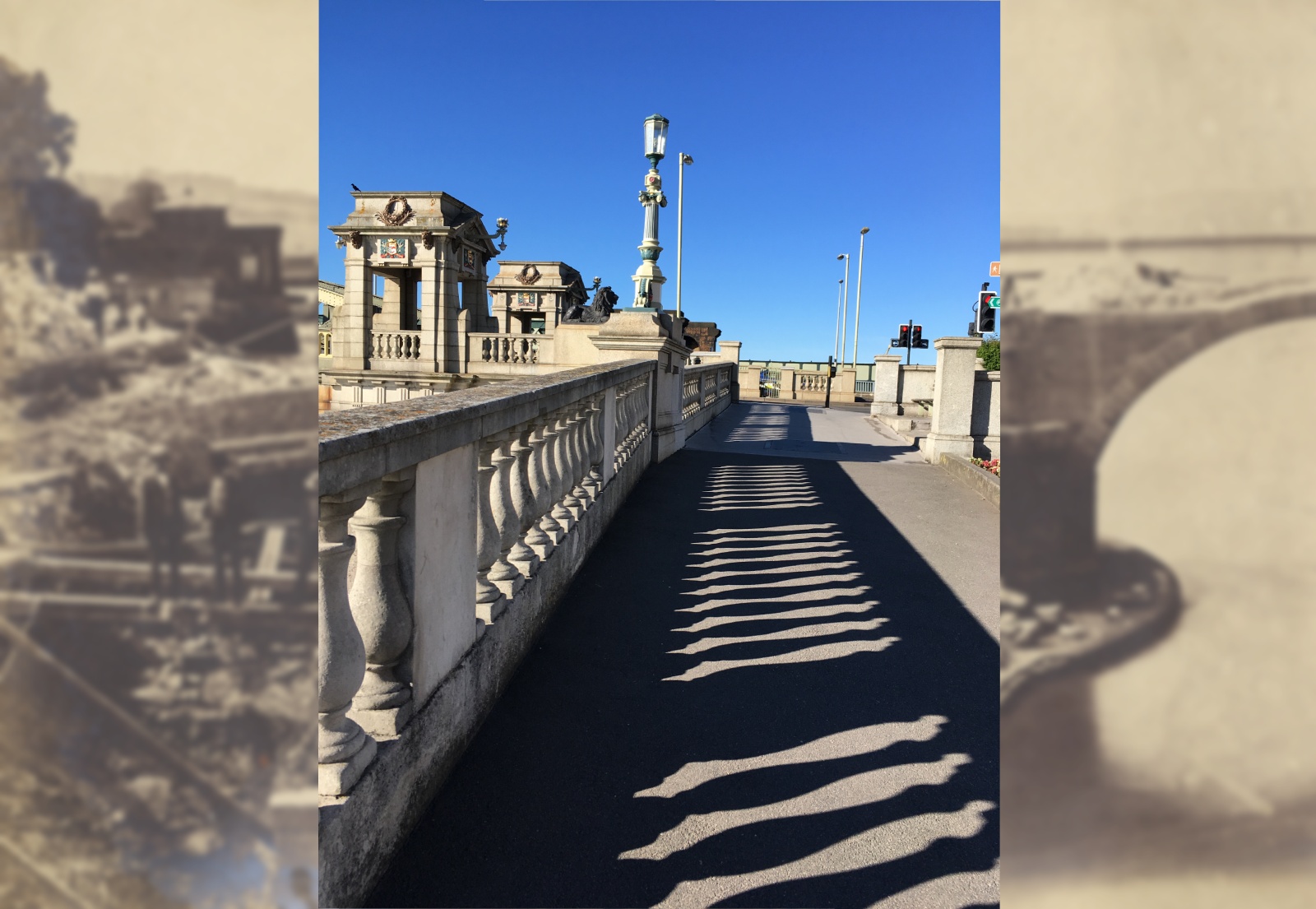Located next to a medieval Bridge Chapel and a Norman Castle, it’s easy to forget that Rochester Esplanade near the end of Rochester Bridge is a relatively new construction.
The area of Esplanade between the bridges and just beyond the entrance to Rochester Castle is owned by the Rochester Bridge Trust. The medieval crossing was built slightly upriver of the position of the modern bridges so there had been a road, called Bridge Lane, for at least 500 years, connecting the end of the medieval bridge back to the High Street. However the raised Esplanade and river wall we have today were constructed by the Victorians using rubble from the medieval stone bridge – after it had been blown up as a demolition exercise by the Royal Engineers.
Re-use of materials has always been a common practice in construction, indeed, the Trust will be re-using granite from part of the Esplanade during the refurbishment project. However, in this case, having a major riverside structure made of recycled stone from the bridge has caused some challenges that now need to be addressed.
There are three main issues to be addressed. As the old stonework settles over the decades, this can cause drainage pipes beneath the surface to crack and it is time to replace them. Secondly, openings in the river wall allow water at high tide to penetrate through the wall and soak into the foundations. When the tide goes out, the water flows out and can wash away fine material. We need to seal the gaps and install special flaps which prevent the river water coming through.
Thirdly we need to address the problems caused by an underground spring – which would have once been located in the moat of Rochester Castle – that flows underneath the Esplanade and emerges beneath the river wall. The flow of this water has been gradually washing away the smallest particles of the medieval rubble that make up the foundations of the road and resulted in a recurring dip in the surface that isn’t dangerous but is a nuisance. This area has been monitored and temporarily repaired for some time but now is the time to implement a more long-term solution by installing a massive culvert connecting the spring properly with the river.
The footway area has been closed to enable contractor FM Conway to dig trial pits for the installation of French drains – trenches filled with rubble – which will form part of the new drainage system. There’s a lot more to this task than digging up the footway, and we’ll tell you more about it as the work progresses, but for now we wanted to let you know why that area has been closed.





